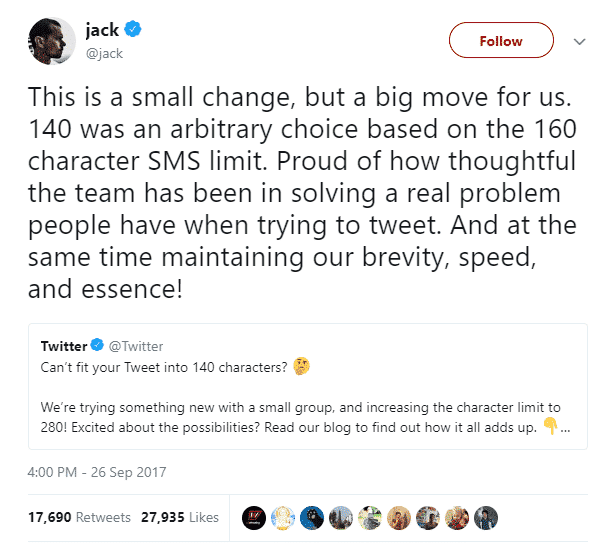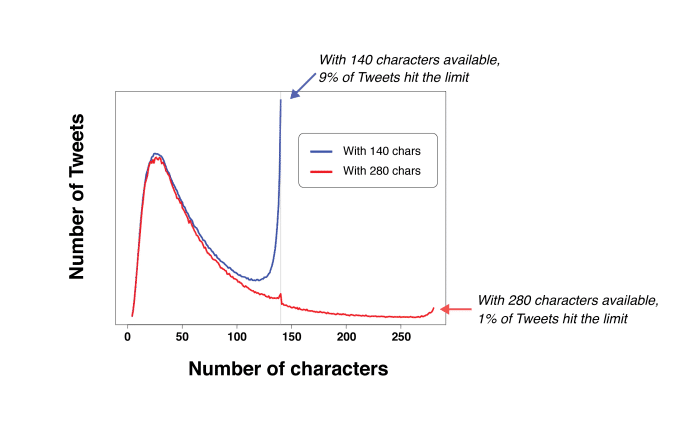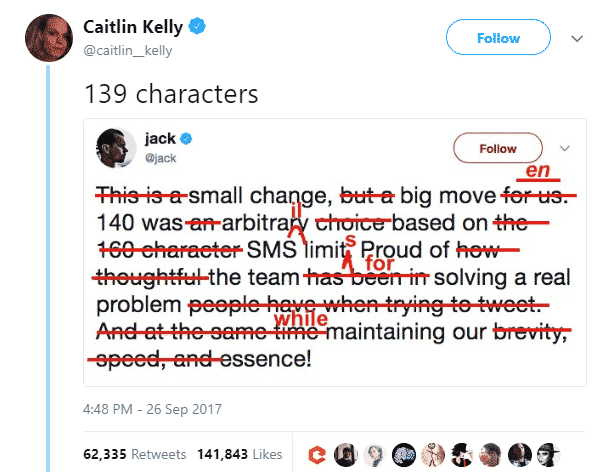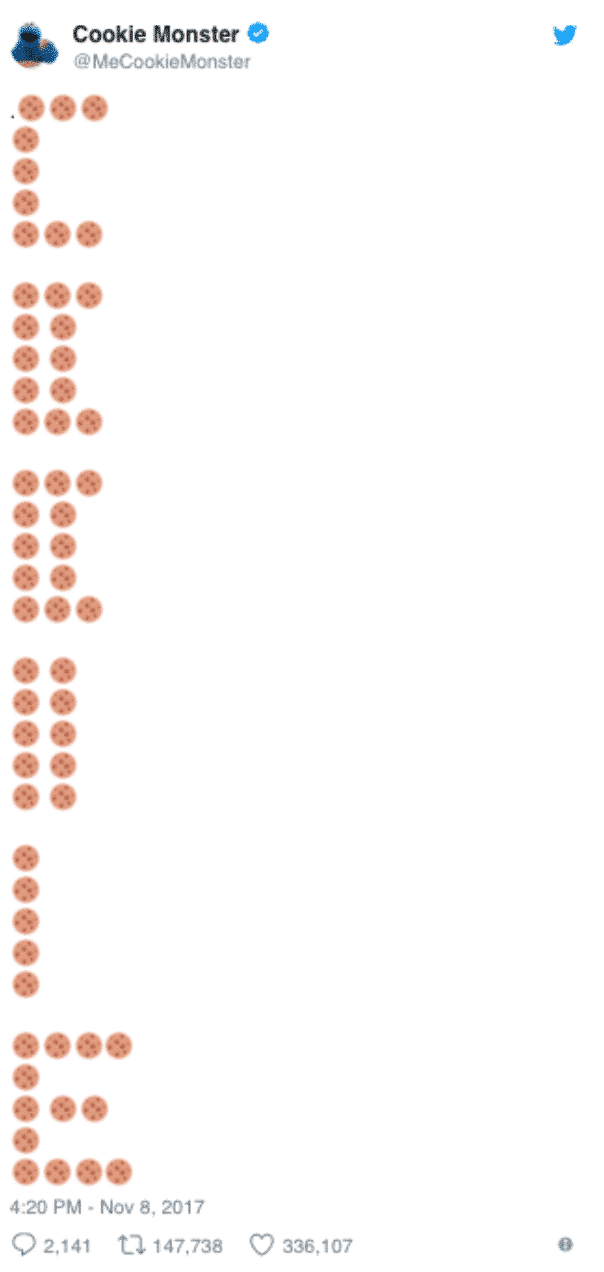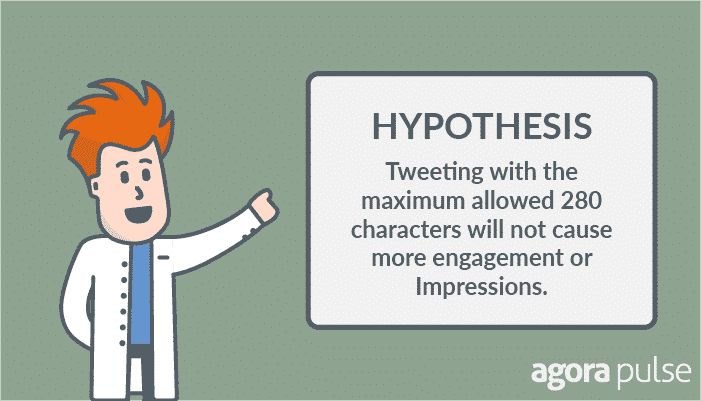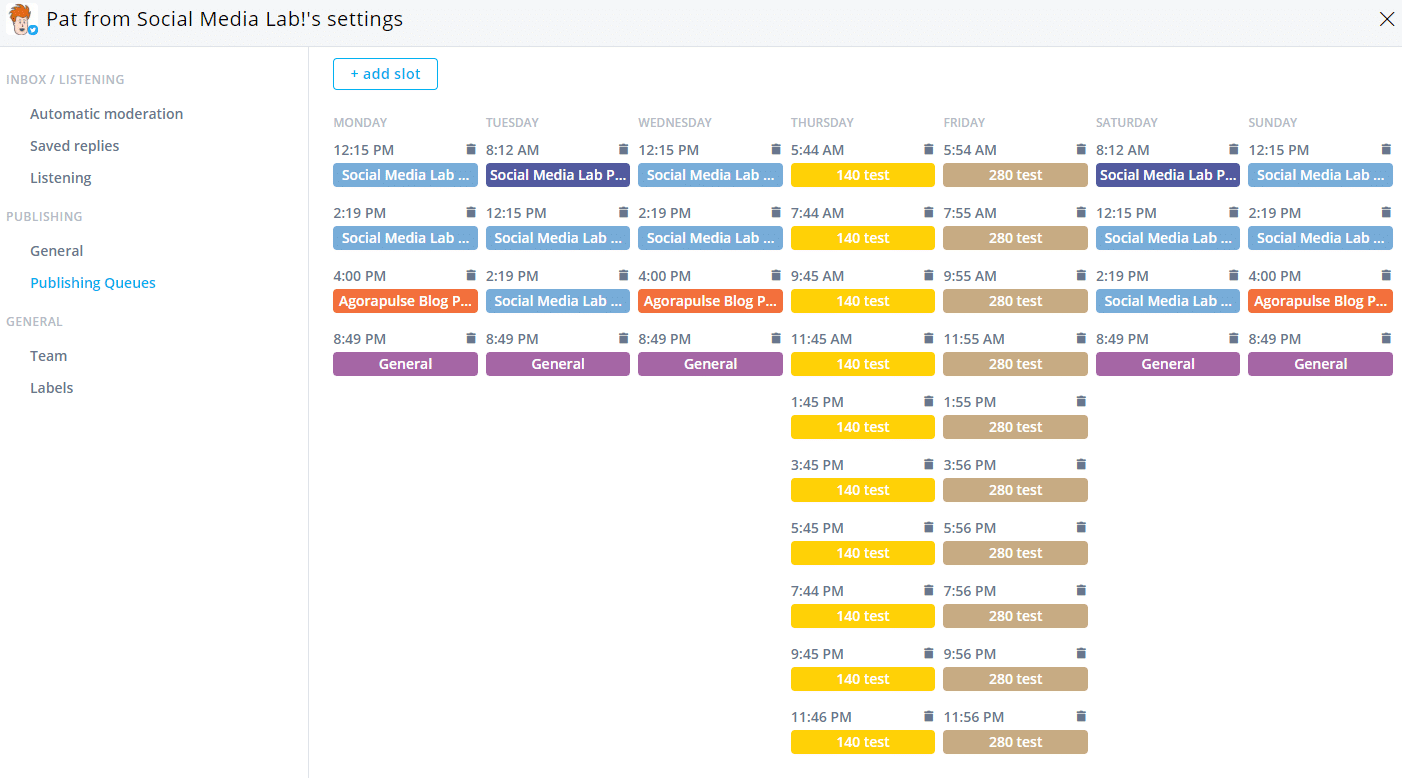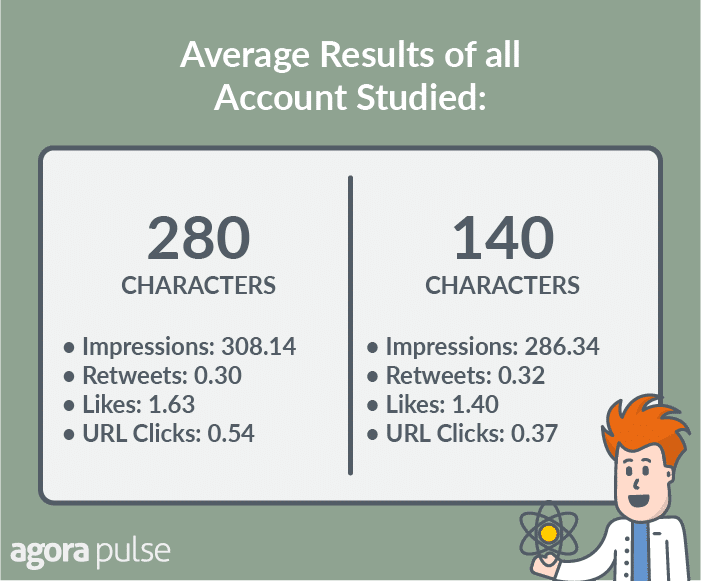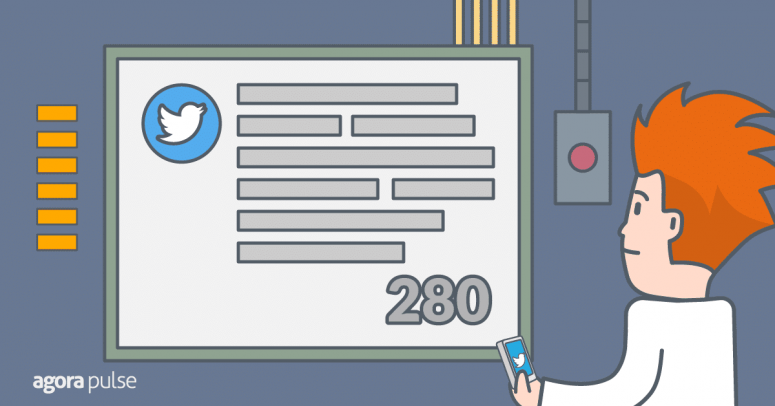
Twitter Raises the Character Limit to 280
Less is more.. or more is better??
When it comes to the character count on Twitter it’s a toss up as to which would be better.
Since Twitter launched in 2006 the character count limit has been 140 characters. This was based on the fact a text (SMS) message was limited to just 160 characters back then.
It took a great deal of creativity at times to cram in your message in 140 characters.
This practice creates loads of odd abbreviations, and at times very poor grammar. (I’m sure the Grammar Police cringed when they saw these tweets!)
But all of this changed when Twitter announced a character increase to 280.
Jack Dorsey, founder of Twitter, made the announcement of course using 280 characters:
Immediately Twitter purist began to scream and cry that this change will ruin Twitter — it hasn’t according to data from Twitter:
One of the funniest was this edit of Jack’s original tweet:
One of the most creative uses of the new limit was good ole Cookie Monster:
Now that everyone has gotten accustom to longer tweets I wondered if there was marketing value in using as many characters as possible, or if staying under 140 characters was better.
Testing Twitter’s 280 Character Limit
Scouring the web it’s hard to find any data on the benefits or negatives of using the 280 character max allowed by Twitter, most blog posts are simply opinions on how to best use the limit or how awful it is.
I sought out to test this to see if the limit could impact engagement rates.
Hypothesis:
How we Tested the 280 Character Limit on Twitter
Getting 100% pure data on a test such as this is a tad difficult. Factors such as timing, follower count, engagement levels, etc come into play.
But I did my best to remove as many anomalies as I could during testing.
Using 5 different Twitter accounts I did the following:
- 9 tweets with 280 characters
- 9 tweets with 140 characters
- Tweets in each character limit set was to the same link, but different text to be within those limits (links were to Agorapulse blog posts)
- Posted on back to back days (for example if I tweeted the 280 character tweets on Thursday on Friday I tweeted the 140 character tweets)
- Some accounts tweeted the 280 character tweets 1st, some tweeted 140 character tweets 1st
- Tweets were identical for all 5 accounts
- Data was pulled 1 week after tweeting
- Used Agorapulse to schedule all of the tweets
While every account didn’t have this exact schedule below this gives you an idea of what the test looked like:
You can see the exact tweets (and detailed data) by clicking on the image at the bottom of this experiment.
Accounts Used for Testing
As mentioned I used 5 different Twitter accounts for this test, originally I had only used the Agorapulse account but after seeing the data comparison I decided further testing was needed.
- @Agorapulse – 9500 followers
- @Scottayres – 16,000 followers
- @theSMbuzz – 10,000 followers
- @FBAnswerman – 6500 followers
- @PatfromSML – 1500 followers
Each of these accounts are active and regularly tweet links related to social media, and primarily links directed to the Agorapulse blog or Social Media Lab blog.
The Data
To draw a conclusion on this test we’ll look at the average of a few different data points for each account, then average all 5 accounts together:
- Impressions
- Retweets
- Likes
- URL Clicks
@Agorapulse:
- 280 Character Tweets
- Impressions: 509.65
- Retweets: 0.33
- Likes: 1.00
- URL Clicks: 1.11
- 140 Character Tweets
- Impressions: 470.56
- Retweets: 0.22
- Likes: 1.00
- URL Clicks: 1.11
Based on impressions and retweets 280 character tweets performed better.
@Scottayres:
- 280 Character Tweets
- Impressions: 675.50
- Retweets: 0.388
- Likes: 2.50
- URL Clicks: 0.8
- 140 Character Tweets
- Impressions: 675.71
- Retweets: 0.71
- Likes: 2.29
- URL Clicks: 0.43
It’s a virtual tie on this account, with retweets and url clicks being higher for 280 characters, but lower for likes.
@TheSMBuzz:
- 280 Character Tweets
- Impressions: 205.67
- Retweets: 0.78
- Likes: 2.67
- URL Clicks: 0.56
- 140 Character Tweets
- Impressions: 167.00
- Retweets: 0.57
- Likes: 1.71
- URL Clicks: 0.29
280 character tweets wins every metrics on this account.
@FBAnswerman:
- 280 Character Tweets
- Impressions: 81.43
- Retweets: 0
- Likes: 1.00
- URL Clicks: 0
- 140 Character Tweets
- Impressions: 55.78
- Retweets: 0.11
- Likes: 1.00
- URL Clicks: 0
Impressions on 280 character tweets wins in a big way on this account, retweets was slightly higher on average for 140 characters.
@PatfromSML:
- 280 Character Tweets
- Impressions: 68.57
- Retweets: 0
- Likes: 1.00
- URL Clicks: 0.14
- 140 Character Tweets
- Impressions: 62.67
- Retweets: 0
- Likes: 1.00
- URL Clicks: 0
Engagement on this account is virtually 0, but Impressions were slightly higher for 280 character tweets.
A quick survey of this data it seems 280 character tweets wins when it comes to Impressions for sure. Let’s average all 5 accounts together to get a clearer picture.
280 Characters
- Impressions: 308.14
- Retweets: 0.30
- Likes: 1.63
- URL Clicks: 0.54
140 Characters
- Impressions: 286.34
- Retweets: 0.32
- Likes: 1.40
- URL Clicks: 0.37
Drawing a Data-Based Conclusion
The impressions of 280 character tweets were 7.61% higher than 140 characters. Not a huge margin of victory, but definitely an advantage.
Retweets is a virtual tie, although technically 140 character averages are 6.67% higher, but being only a .02 difference on average isn’t much to get excited about.
Likes were 16.43% higher for 280 character tweets, eventhough the raw number is only .23 different.
Url clicks, which to me is one of the most important and overlooked metrics, is 45.95% higher for 280 characters — although again it’s only a .17 difference on average.
Originally my hypothesis (best guess) was 280 character tweets would not perform better — I’m going to conclude that I was wrong based on the higher number of Impressions, Likes and URL clicks.
It’s easy to see 280 character tweets performed better, but scientifically speaking the results aren’t significant unfortunately.
Regardless of how we compare the results (Impressions to retweets, clicks, likes. Or number of tweets to impressions, retweets, clicks, likes) the results aren’t considered significant.
The calculator comes out at about 55-60% certain that 280 character tweets performed better, which isn’t bad but not enough to make someone completely change their marketing strategy on Twitter.
So what can we do with this conclusion?
- Consider posting tweets that are marketing in nature that use the 280 character max, but there is no need to do it on every tweet.
- Leverage the extra characters when using replies for customer service, no need to abbreviate every other word.
- Craft creative tweets such as the Cookie Monster example, social media is meant to be fun still afterall.
I think the real takeaway here is that it’s not the size of your tweet that ultimately matters, it’s the quality of your tweet.
If you’re looking for some thoughts and ideas on how to use 280 characters in your marketing here are a few good resources:
